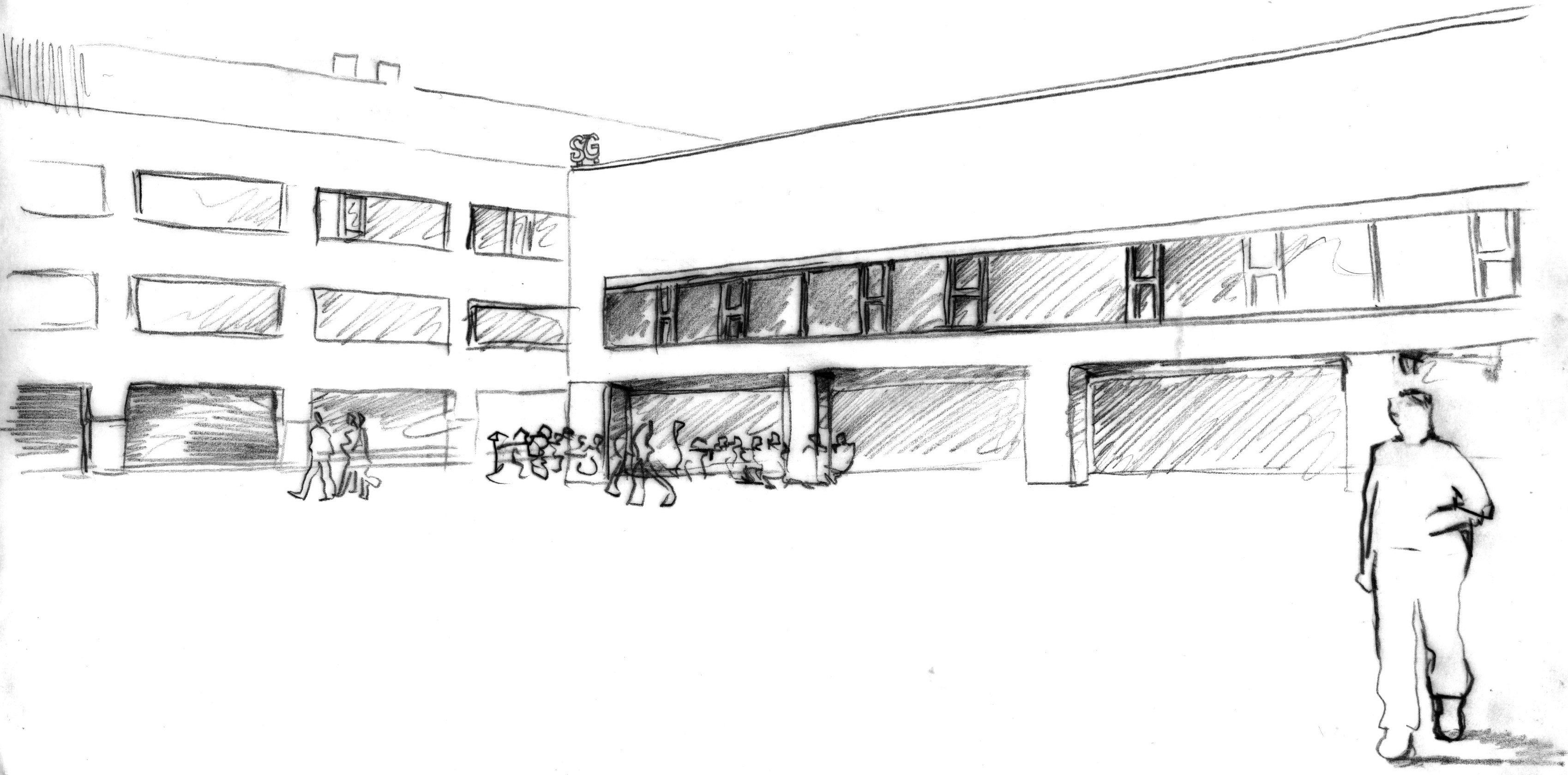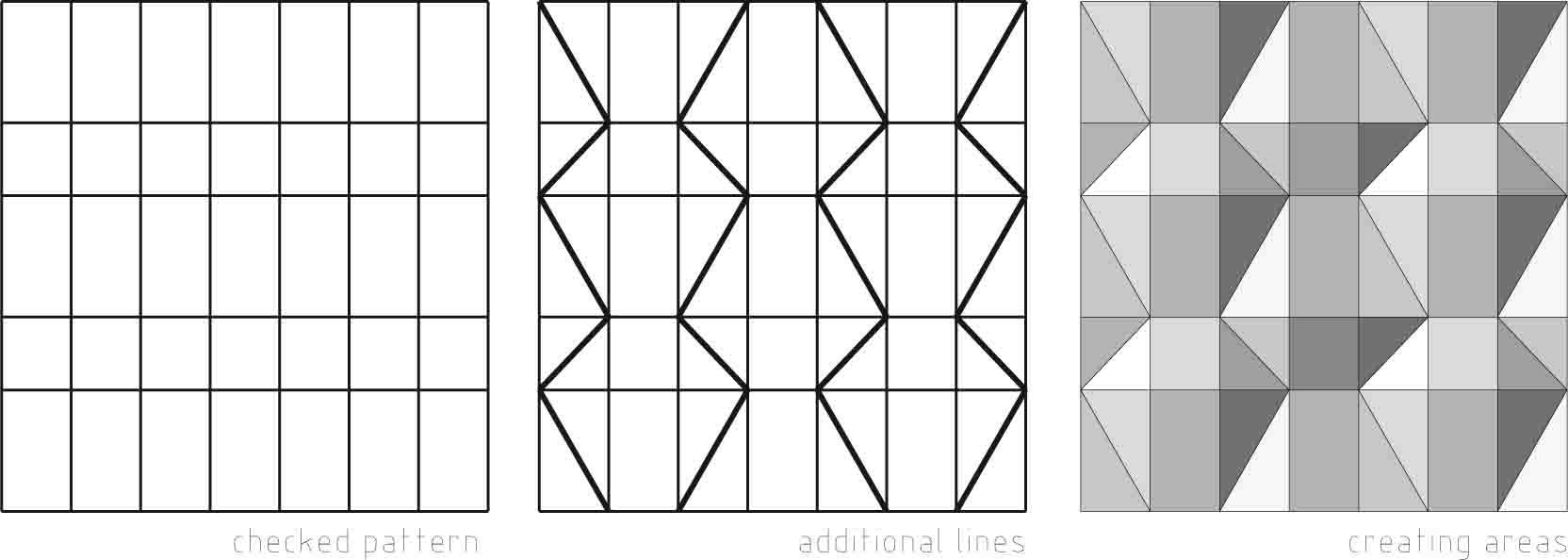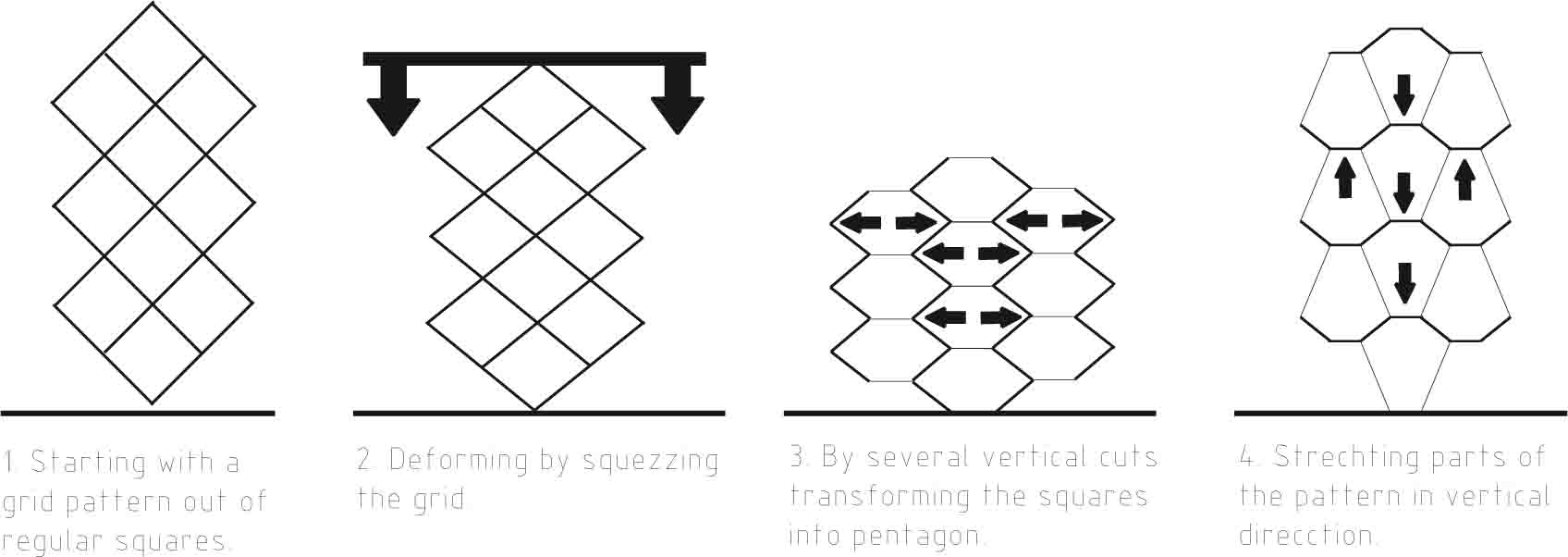|

02 week
Enclosure for the cafeteria

Different ways of using the choosen language in the design process.
-1- Pattern inspired by nature
-2- Mathematical development of a pattern
-3- Why not working with a pattern which is already there?
-4- Pattern and Movement
-----------------------------------------------------------------------------------------------------------------------------------------------
01 week
Tilling and patterns- the results of a first research
2D-pattern

Lots of examples of 2D pattern can be found in historic tils. Most of the time their structures are based on very simple principles.
But nevertheless they are eyecatch
ers, because the principles aren't that obvious or seem to bee more complicated.

The example, I found, here is a very basic on, but still- at least I think- it is interesting. The pattern consists of two different shapes:
a star and a somehow deformed hexagon.
As our eye/brain is not able to see both shapes at the same time, it switches between both.
3D-pattern

I choose a quite old example from the seventies, the Centrum Warenhaus Dresden. Its fassade is made out of hunderts of Aluminium pieces.
Each piece has the same shape, which resembels a diamond.
I tried to reconstruct the pattern and found two different ways to develop a pattern like this. Both methodes come from 2D.


Other ways to great pattern
The two former patterns are very geometric and very repetetive. I searched for other ways two develop patterns and found different examples.
One is the so called "Watercube" in Beijing. The ETFE-fassade resembles foam bubbles. Not until a closer look you don't recognize the repetetion
of the bubbles.
An other way to develop patterns is fractal geometry, with was founded in the 1970s by Benoît Mandelbrot.
Fractal Geometry traces the path of self-similarity. Each pattern developed with fractal geometry starts in general with a simple geometric
from. One operation is applied several times.
|